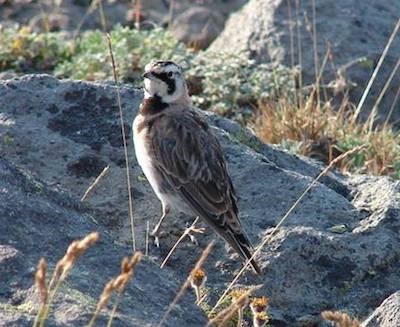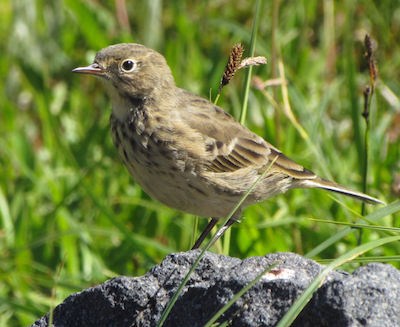|
Though in different families, both the horned lark and American pipit are similar-sized birds found in the open subalpine to alpine areas of the park. The two species often nest near each other at high elevations and occasionally forage together in flocks during non-breeding seasons. Larks - Order Passeriformes, Family Alaudidae
NPS/S. Redman Photo Horned Lark Pipits - Family Motacillidae
Crow Vecchio Photo American Pipit
Return to Bird Guide
|
Last updated: January 15, 2021
